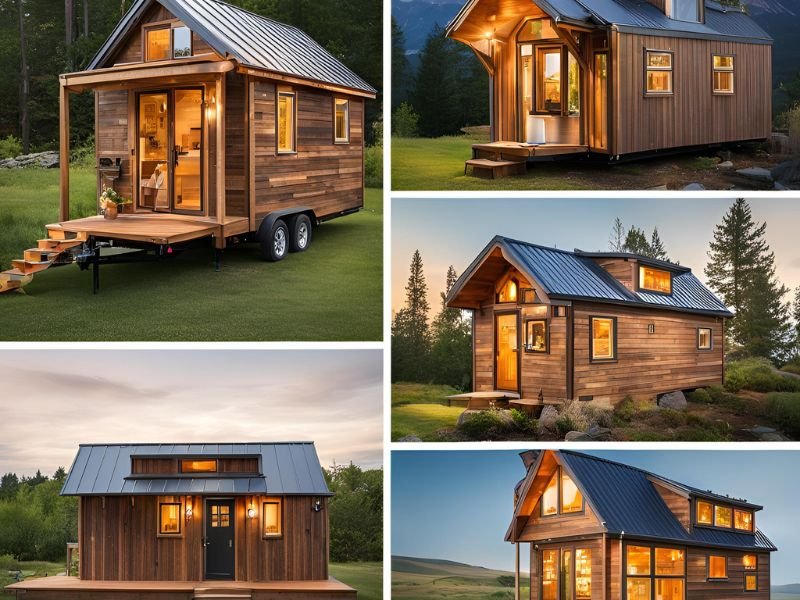To navigate tiny home legal challenges, understand zoning laws for placement. Obtain variances if needed. Follow regulations for location. Comply with building codes; get permits beforehand. Guarantee safety standards are met for resident well-being. Learn land use rules; check permits and property tax impact. Know parking restrictions; secure legal parking permits. Check if only RV parks allow parking; tax may vary. Engage authorities, neighbors for community acceptance. Obtain necessary permits to legalize. Familiarize with relevant city ordinances. Every step guarantees compliance and minimizes conflicts for your tiny home lifestyle.
Key Takeaways
- Research zoning laws and variances for tiny home placement.
- Obtain permits and adhere to building codes for compliance.
- Understand land use regulations and property tax implications.
- Comply with parking regulations and location restrictions.
- Engage with local authorities to legalize tiny homes in communities.
Zoning Laws and Tiny Homes
When considering tiny home living, understanding zoning laws is important to avoid legal challenges. Zoning variances play a significant role in determining where you can place your tiny home.
Some areas have specific regulations for tiny home communities, allowing for clusters of these dwellings in designated zones. It’s important to research and comply with these regulations to make sure that your tiny home is situated in a permissible location.
By being aware of zoning variances and the rules governing tiny home communities, you can proactively address any potential legal issues that may arise.

Building Codes Compliance
Succeeding in tiny home living also involves making sure that your dwelling complies with local building codes. To navigate this aspect effectively, you must be aware of permit requirements and safety standards. Obtaining the necessary permits for your tiny home construction is essential to ensure legality and safety. Additionally, adhering to safety standards guarantees the well-being of yourself and others residing in or around your tiny home. Below is a table summarizing key points related to building codes compliance:
| Building Codes Compliance | |
|---|---|
| Permit Requirements | Obtain necessary permits before construction. |
| Safety Standards | Ensure compliance with safety regulations. |
Land Use Regulations
To navigate the legal challenges of tiny home living effectively, you must familiarize yourself with land use regulations in your area. Here are some key points to keep in mind:
- Permit Requirements: Check with your local zoning office to understand the specific permits needed for your tiny home. Different areas may have varying regulations regarding tiny home placement and construction.
- Property Taxes: Be aware of how having a tiny home on your property may impact your property taxes. Some areas consider them as additional dwellings, which could impact your tax obligations.
- Zoning Laws: Understand the zoning laws in your area to make sure your tiny home complies with the designated land-use regulations.
- HOA Restrictions: If you live in a community with a homeowner’s association, review their rules to see if they allow tiny homes on properties within their jurisdiction.
Parking and Location Restrictions
Understanding the parking regulations and location restrictions applicable to your tiny home is essential for ensuring compliance with local laws and regulations. When parking your tiny home, you may need to obtain a permit to legally place it on a particular property.
Some areas have restrictions on where you can park a tiny home, such as only allowing them in designated RV parks or on properties zoned for such dwellings. Additionally, property taxes may vary depending on whether your tiny home is classified as a permanent residence or a recreational vehicle.
It’s important to research the permit process for parking your tiny home and be aware of any location restrictions to avoid potential legal issues.
Legalizing Tiny Homes in Communities
Legalizing tiny homes in communities calls for thorough research and active engagement with local authorities to guarantee compliance with zoning and building codes. When seeking to legalize tiny homes in your community, consider the following:
- Community Acceptance: Gauge the acceptance level of tiny homes in your neighborhood to anticipate potential pushback.
- Municipal Permits: Obtain the necessary permits from local authorities to make certain your tiny home meets all legal requirements.
- Neighborhood Concerns: Address concerns from neighbors regarding the impact of tiny homes on property values and aesthetics.
- City Ordinances: Familiarize yourself with relevant city ordinances that may affect the placement and construction of tiny homes in your area.
Conclusion
Overall, dealing with legal challenges in tiny home living can be complex but not impossible. Remember to research local zoning laws, comply with building codes, and understand land use regulations.
One interesting statistic to note is that according to the American Tiny House Association, there’s been a 67% increase in the number of tiny home communities across the United States in the past five years, showing a growing acceptance of this alternative housing option.
